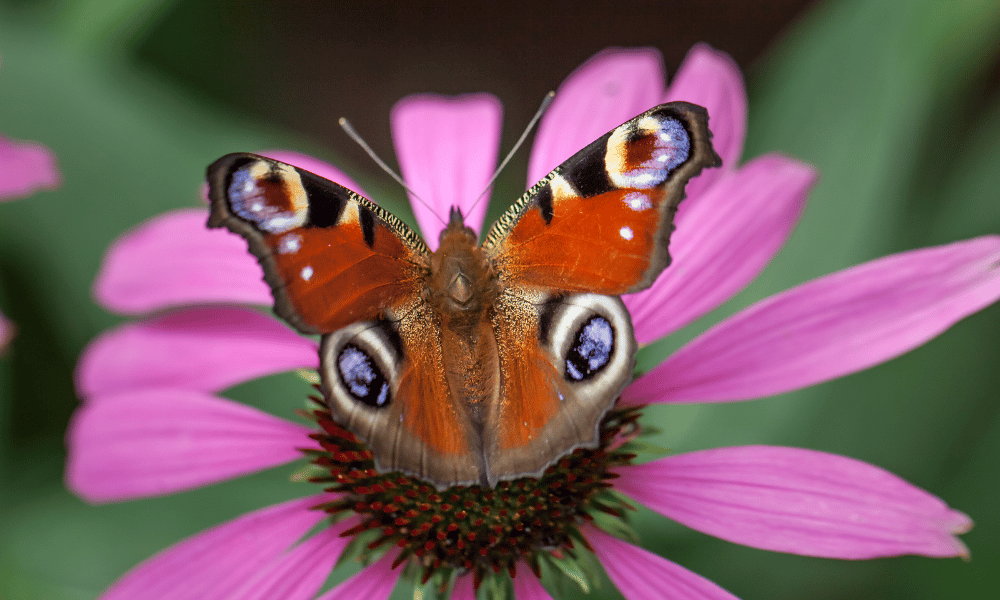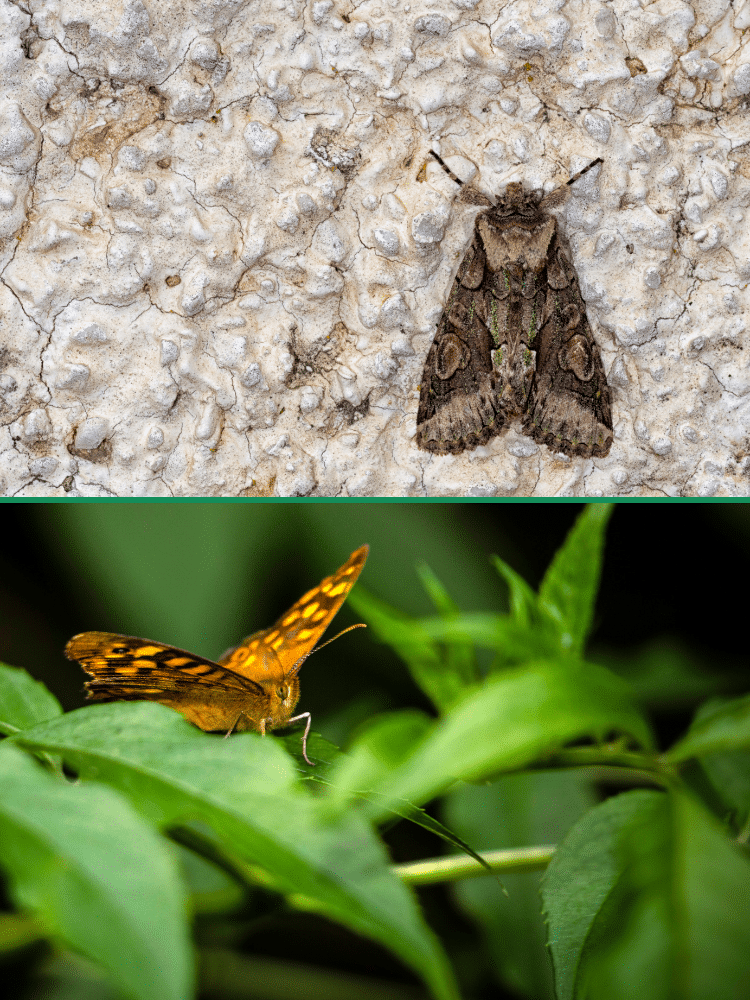Peacock butterflies are among the most beautiful and easy-to-identify butterflies in the UK. These butterflies are orangish-red with bold blue eyes on their wings. While peacock butterflies are common to see fluttering in your garden, you may wonder what plants peacock butterflies like so you know what to plant?
Buddleia is one of the peacock butterflies’ favourite plants. Other plants that peacock butterflies like include: Thistles, betony, bluebells, cuckoo flowers, dandelions, and teasel.

What Do Peacock Butterflies Feed On?
Like all butterflies, peacock butterflies feed on nectar from flowers. Planting flowers that are blue, purple, yellow, or white in colour will help attract butterflies to your garden.
Another thing to consider when choosing which flowers to plant in your garden is their shape. Butterflies and other pollinators prefer flat flowers as these are the easiest to get nectar from.

Thanks to the butterfly’s proboscis, or long straw-like mouthpiece, the butterfly can easily access nectar from even the oddest-shaped flowers. Flowers that are tubular are another favourite for butterflies.
Peacock butterflies favour buddleia plants and love the nectar from thistle, betony, bluebell, dandelion, and teasel.
Growing any number of these or a variety of these plants mixed with plants like asters, daisies, or milkweed will increase the odds of seeing peacock butterflies in your garden space.
It is common to see these butterflies throughout the UK. Peacock butterflies are not currently endangered or at risk of becoming endangered according to the RSPB.
A leisurely stroll through woods, gardens, or parks will most likely result in a peacock butterfly sighting.
Peacock butterflies need easy-to-access nectar so plants that have complex flowerheads with hidden away nectar will not be liked by peacock butterflies including roses, dahlias and various bedding plants.
What Do Peacock Caterpillars Eat?
Unlike adult butterflies, caterpillars do not live off a liquid diet. As we all know, caterpillars are very, very hungry and will eat many times their body weight in their short stint as a caterpillar.
This allows them to grow and store the energy needed to create a cocoon and sustain themselves while undergoing metamorphosis.
They then will emerge from the cocoon as adult butterflies. Adult butterflies seek out thistles and similar plants to lay eggs on, and the cycle starts again.
When peacock butterflies are in their caterpillar stage, they eat lots of leaves from stinging nettles and hops.

It is important to incorporate plants that provide food to sustain every cycle of the butterfly’s life cycle to be sure that you not only attract the peacock butterflies but to keep them in your garden.
Yes, caterpillars are annoying, but they are the baby version of peacock butterflies. If you want to peacock butterflies in your garden then you’re going to need to have their larve too!
Since peacock butterflies like to lay eggs on thistle plants, it is important to have a bush or two to ensure that the adult butterflies have a place to lay their eggs.
Once the eggs hatch, the larvae and the caterpillars will feed on hops and stinging nettle plants. These should be planted near the thistle so when the eggs hatch, the caterpillars do not have to search very far to find food.
Want to Attract Butterflies to Your Garden?
We’ve Put Together an Ultimate Guide to Attracting Butterflies to Your Garden Including Our Top 11 Plants You NEED to Start Growing Today:
Adult butterflies will eat nectar from almost any flowering plant. If you have a favourite plant that you would like to grow, you would most likely get a butterfly to feed from it.
It is best to choose plants that flower throughout the season and vary the ones that only bloom once by adding multiple plants that bloom at different times. This will ensure that you will always have food for butterflies.
Peacock butterflies will lay their eggs on plants that their larvae like to eat. One plant they love to lay their eggs on is thistles.
Summary
Peacock butterflies are not only beautiful but also abundant. Luckily, these gorgeous little fluttering insects are extremely common to find throughout the UK and love to eat on native plants that are commonly found in almost every garden.
Whether you are walking in the woods, through a public park, or sitting in your own garden space, you will most likely be visited by a few peacock butterflies.
There are some plants you can grow in your own garden that will help increase the number of peacock butterflies that are living in your space.
Choosing plants that feed the peacock butterflies in all of their life cycles will ensure that adult butterflies lay their eggs in your garden.
Thistles, hops, and stinging nettle are important during the early life cycles of the peacock butterfly. Once they reach adulthood, they will feed on nectar from almost any flower.
All butterflies prefer flowers that offer easy access to nectar reserves, like flat flowers or flowers that are tubular shaped. However, peacock butterflies are known to love buddleia plants as well as bluebell and dandelions among other flowers.
Carefully curating your gardens to become an oasis for peacock butterflies will allow you to enjoy these beautiful and unique insects all season long.







